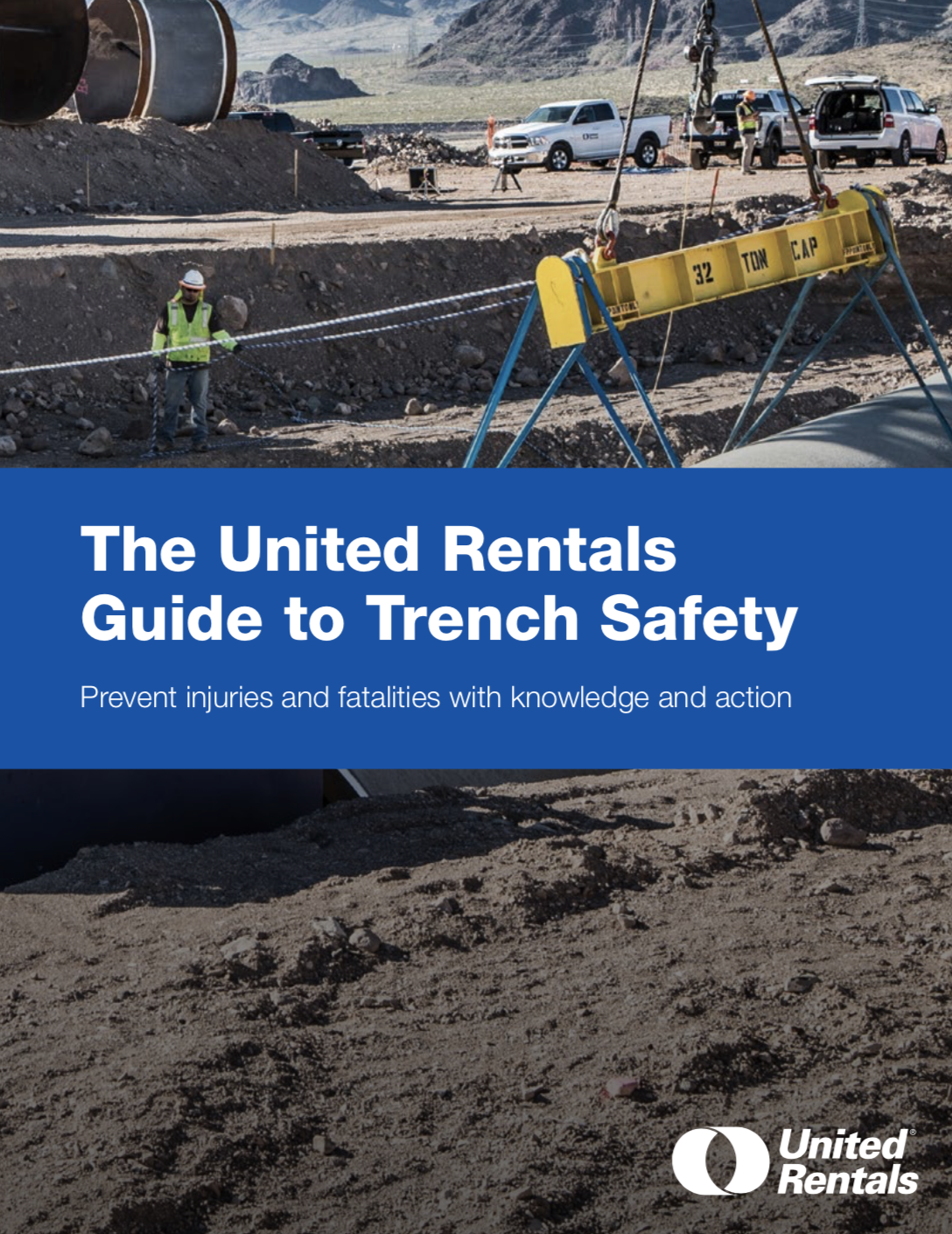These pins monitor the strain on hydraulic struts and provide important insights.
Many contractors today are using hydraulic bracing systems — a combination of modular struts and walers — to shore up the vertical faces of an excavation and prevent soil movement and cave-ins. Adding load pins to these setups provides important, real-time information about the systems’ status.
“The load pin can monitor in real time the loads that are running through a given hydraulic strut,” said Michael Barr from United Rentals’ Trench Safety Division. The load pins, approximately 4 to 5 inches in diameter and 6 to 8 inches tall, are placed into the end swivel plates of the hydraulic strut and attached to acquisition modules housed under a protective cover. The module takes the load information from the pin and transmits it to a monitoring device via a wireless network.
Contractors have two ways to receive data from the pins. One is a handheld device the customer can take out onto the site to read all the data the various load pins are transmitting. The second is a stationary receiving device located within 150 feet of the excavation (inside a mobile office, for example). It will pick up the signals from the load pins and send the data to the desktops or laptops of the contractor, the engineer, the customer or another interested party on or off site.
The load pin software United Rentals uses comes with 20 pre-programmed warnings that alert the user to substantial load fluctuations. “So if a hydraulic starts bleeding out fluid, we would be able to see that in real time and address that situation accordingly,” said Barr. If the load pins indicate a sudden increase in loading, the contractor can investigate and take corrective action.
Value engineering
The number and placement of load pins used for a particular excavation is determined by the excavation engineer. On one excavation United Rentals is supporting — it runs 150 feet long, 45 feet wide and 34 feet deep — a contractor is using just four pins. For another excavation — 50 feet long, 80 feet wide and 160 feet including some rock blasted shear walls — the engineer has specified that more than 30 load pins be used.
Barr said there are two circumstances when load pin monitoring is invaluable. “One is where there is a reviewing agency or a reviewing engineering firm that has specified that you have to monitor the loading of the system,” he explained. That might happen when a contractor is digging a 50- or 60-foot pit right next to a large, tall building, for example. “We want to know if the loads on our excavation support system start changing because that could impact the surrounding environment,” Barr said.
The other situation is when an engineering firm wants to learn from the data generated by the excavation support system they’ve designed. “If we put these load monitoring devices in, over the course of the excavation’s duration we can monitor those loads for historical purposes,” Barr said. “At the end of the excavation we can go back and meet with the engineer of record to discuss what we saw. That real-time feedback can help us as we move forward to better design these shoring systems. It gives us the ability to value engineer excavations because we know the potential of what we are going to see versus what is theoretical.”
“If we put these load monitoring devices in, over the course of the excavation’s duration we can monitor those loads for historical purposes. At the end of the excavation we can go back and meet with the engineer of record to discuss what we saw. That real-time feedback can help us as we move forward to better design these shoring systems. It gives us the ability to value engineer excavations because we know the potential of what we are going to see versus what is theoretical.”
An added level of safety
When a customer wants to use load pins, United Rentals uses a third-party firm to calibrate and test them to ensure they are accurate and in good working order. Only then does United Rentals install them in the hydraulic struts before sending them to a jobsite. The only maintenance required once the pins are operational is changing the batteries in the acquisition modules, which isn’t difficult.
There’s one more good reason to use load pins: They provide a fourth level of safety for the hydraulic strut systems. Barr said the first level is the mechanical lock-off mechanism that’s turned once the hydraulic ram is pumped out. The second safety level consists of built-in lock-off bars that are put in place and tightened with locking nuts, preventing the strut from expanding or contracting on its own. The third level of safety includes hanging chains wrapped around the struts and attached to some part of the vertical face of the excavation so that the struts won’t shift if something makes contact.
“Those are the mechanical pieces, and now you get into the technological pieces. That’s where load pins come into play,” said Barr. With their ability to generate real-time data and their built-in early warning system, load pins can give contractors the ability to correct potential problems and avert failures in hydraulic support systems before they cause injuries to workers or damage to property.
Download the United Rentals Guide to Trench Safety

Read more about how United Rentals can help with trench safety solutions.
Freelance writer Mary Lou Jay writes about business and technical developments in a variety of industries. She has been covering residential and commercial construction for more than 25 years.


